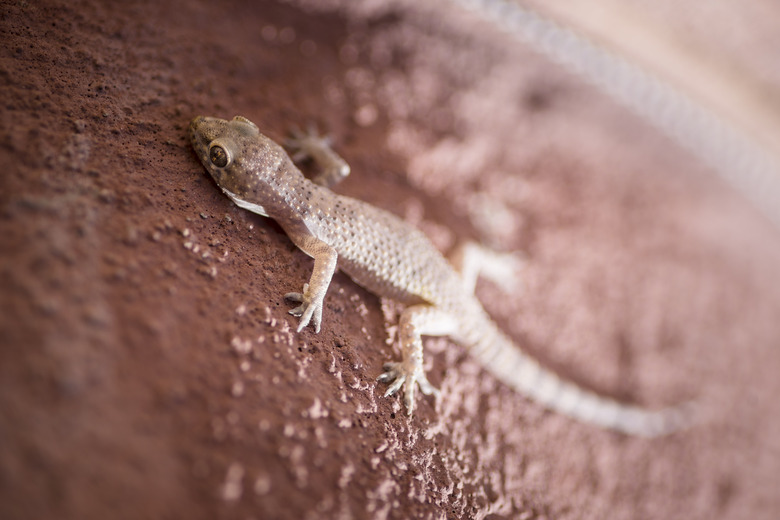How To Identify Louisiana Geckos
Louisiana's only gecko species is the Mediterranean gecko (Hemidactylus turcicus), which has been introduced into parts of the southern United States from the coasts bordering the Mediterranean Sea. This non-native Louisiana inhabitant lives in scattered populations throughout the state, primarily near urban and suburban areas. Though geckos, being a type of lizard, share many characteristics with Louisiana's native lizard species, there are some key differences that make this species fairly simple to identify.
Step 1
Consult a field guide to Louisiana reptiles and amphibians before attempting to identify the Mediterranean gecko. Louisiana has 14 species of lizards; a field guide can give you an idea of what to look for before you begin, as well as helping you to learn the terminology associated with reptiles.
Step 2
Notice the size and shape of the lizard. Mediterranean geckos are generally between 4 and 5 inches in length, including the tail. These geckos have fairly flat bodies and proportionally large heads.
Step 3
Notice the lizard's coloration. Mediterranean geckos come in two color phases: light and dark. In the light phase, geckos are a pale pink color with dark patches across the back; the main color of geckos in the dark phase is dark brown or gray with dark patches. At night geckos appear much lighter, often seeming almost white.
Step 4
Note the lizard's tail. The Mediterranean gecko has dark bands that wrap around the tail.
Step 5
Look for small, warty bumps that protrude from the skin, most prominently along the sides and legs of the lizard. These are characteristic of the Mediterranean gecko.
Step 6
Look closely at the lizard's eyes, if you can. The eyes of the Mediterranean gecko are dark with a slit for a pupil, like a cat's eye. Louisiana's other lizard species have round pupils.
Step 7
Pay attention to the lizard's feet. Mediterranean geckos have distinctive, thick pads on their toes that help them to climb vertical surfaces.
Step 8
Notice any behavioral clues about the lizard. Geckos are active at night and can often be found on the sides of buildings near light fixtures. They will also occasionally make chirping or clicking noises.
TL;DR (Too Long; Didn't Read)
For some people it may be easier to photograph or sketch the lizard and compare it at a later time to photos in a field guide to determine if it is a Mediterranean gecko.
If you are unsure whether a lizard is a Mediterranean gecko, consult an identification key or a local herpetology group.
Warning
Never touch or harass a gecko.
References
Cite This Article
MLA
Miller, Lisa. "How To Identify Louisiana Geckos" sciencing.com, https://www.sciencing.com/identify-louisiana-geckos-6465688/. 22 November 2019.
APA
Miller, Lisa. (2019, November 22). How To Identify Louisiana Geckos. sciencing.com. Retrieved from https://www.sciencing.com/identify-louisiana-geckos-6465688/
Chicago
Miller, Lisa. How To Identify Louisiana Geckos last modified March 24, 2022. https://www.sciencing.com/identify-louisiana-geckos-6465688/
